Ah, mushrooms! Those incredible fungi that come in all shapes, sizes, and flavors. Some are prized for their culinary uses, while others are renowned for their medicinal properties. Today, let’s delve into the fascinating world of turkey tail mushrooms, a unique and beneficial member of the mushroom kingdom.
What Makes Turkey Tail Mushrooms Truly Special
Unlike edible mushrooms such as portobellos or oyster mushrooms that can be enjoyed in a delicious meal, turkey tail mushrooms are not meant for direct consumption. Their thick and woody structure renders them inedible to humans. However, these mushrooms harbor a treasure trove of compounds that make them worth exploring.
The great news is that preparing turkey tail mushrooms for medicinal use is a simple task. In this article, we will guide you through the process of harnessing the benefits of turkey tails. From finding and identifying them to understanding their incredible benefits, we’ll cover it all. So keep reading to see if turkey tail mushrooms are something you might want to add to your daily health regimen.
Unveiling the Mysteries of Turkey Tail Mushrooms
Turkey tail mushrooms, scientifically known as Trametes versicolor, Coriolus versicolor, or Polyporus versicolor, are polypore mushrooms found all around the world. These mushrooms belong to a unique category that showcases tiny pores on their undersides, as opposed to the gills found in most mushrooms. Often growing on living or dead trees, these shelf-like fungi possess a tough and inedible nature, while still containing beneficial compounds.
With a captivating display of colors, including white, shades of red and orange, and even dark brown, turkey tail mushrooms get their name from their resemblance to the tail of a wild turkey. These mushrooms have a long history of use, dating back centuries in traditional Chinese medicine. Initially employed to address respiratory issues, liver problems, and spleen disorders, turkey tail mushrooms have captured the attention of health enthusiasts for generations.
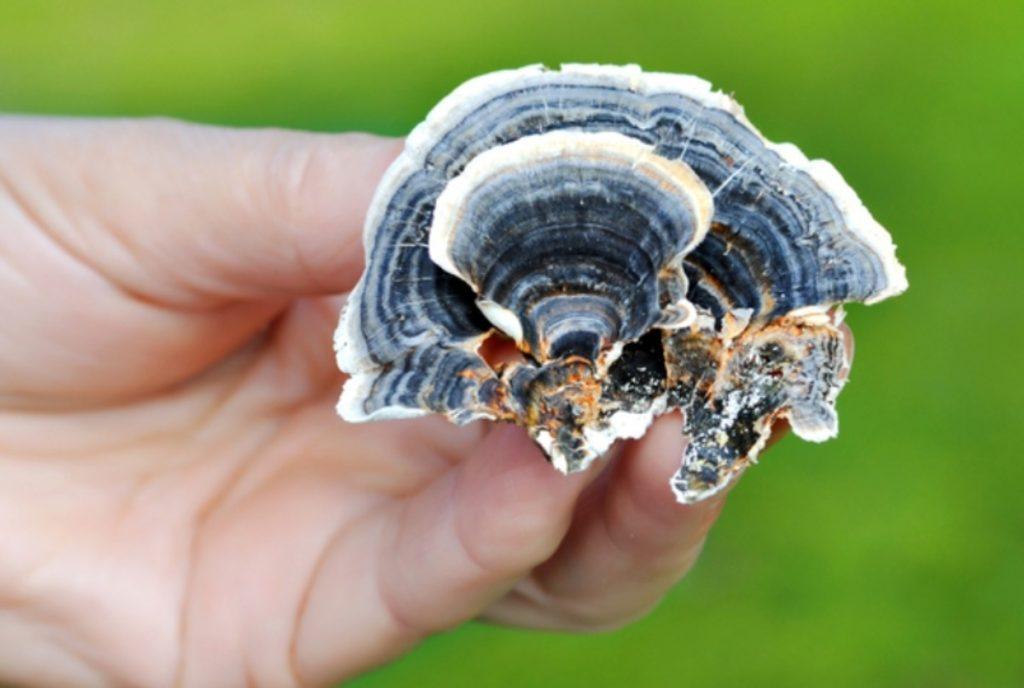
The Captivating Appearance of Turkey Tail Mushrooms
The caps of turkey tail mushrooms are approximately 0.7 to 3 inches (2 to 8 cm) in diameter and remarkably thin, measuring only 0.04 to 0.08 inches (1 to 2 mm) in thickness. These caps come in various shapes, ranging from kidney-shaped to circular or even semi-circular, bracket-shaped, or fan-shaped.
When young and fresh, turkey tail caps exhibit flexibility, but they quickly dry out and become brittle. Their texture can feel velvety or even slightly hairy. What truly sets turkey tail mushrooms apart is the mesmerizing concentric ring-like patterns adorning their caps. These captivating rings display a stunning array of white, brown, red, orange, cinnamon, and grey hues. Occasionally, you may even encounter hints of green or blue in these remarkable mushrooms. Remember, though, that relying solely on color for identification purposes might lead you astray.
Underneath the turkey tail cap, you’ll discover a pore surface ranging in color from white to pale brown. This entire underside is covered in tiny pores, with a one-inch (2.5 cm) area hosting anywhere from 75 to 150 of them.
Turkey tail mushrooms thrive in outdoor environments. For more information on growing mushrooms outside, visit our article How To Grow Mushrooms Outdoors With A Mushroom Bed.
The Safety of Turkey Tail Mushrooms
Rest assured, turkey tail mushrooms are not poisonous, making them safe for consumption. Furthermore, there are no known poisonous look-alikes, eliminating the risk of accidental ingestion. However, it’s crucial to note that these mushrooms are not suitable for direct consumption due to their tough and woody nature. After all, you wouldn’t want to feast on a mushroom with the texture of a tree branch, even after thorough cooking.
Instead, the most common practice involves drying and grinding turkey tail mushrooms into a powder. We’ll delve into how to utilize this powder for medicinal purposes further on. Despite their inedibility, turkey tail mushrooms offer a plethora of potential health benefits, making them a valuable addition to your wellness routine.
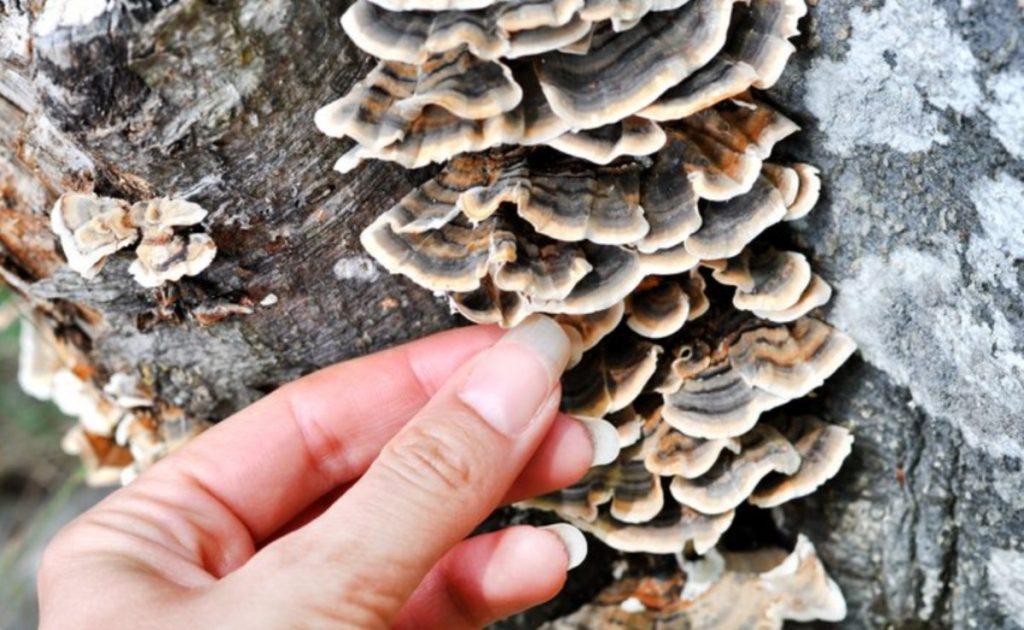
Unleashing the Health Benefits of Turkey Tail Mushrooms
Turkey tail mushrooms boast a wide range of potential benefits, addressing both minor concerns and more serious conditions, including cancer. These incredible mushrooms contain a rich assortment of flavonoids and phenols, powerful antioxidants that fortify your immune system. By reducing inflammation and stimulating your body’s production of protective compounds, turkey tail mushrooms help bolster your overall well-being.
Additionally, turkey tail mushrooms promote gut health by providing beneficial prebiotics that suppress harmful bacteria like E. coli. These mushrooms also foster the growth of beneficial bacteria in your gut, offering a myriad of advantages. From aiding digestion to reducing cholesterol levels, a healthy gut microbiome plays a crucial role in your overall health.
Turkey tails aren’t just good for your immune system and gut; they also pack a fiber punch. This dietary fiber promotes healthy digestion, ensuring your body operates smoothly. Furthermore, a study suggests that turkey tail mushrooms may even enhance athletic performance. In a study conducted on mice, those who consumed turkey tail extract exhibited lower levels of fatigue and performed better compared to their non-turkey tail-consuming counterparts.
And these are just some of the incredible benefits turkey tail mushrooms have to offer. Now, let’s dive into some remarkable health claims associated with these mushrooms.
Health Benefits of Turkey Tail Mushrooms
Turkey tails hold even more promise when it comes to addressing serious chronic ailments and improving overall well-being. Although many studies on turkey tail mushrooms have been conducted on animals, limited information is available on their effects on humans. Thus, before incorporating turkey tail mushrooms into your routine, it’s always wise to consult your doctor.
-
Reduced insulin resistance: Turkey tail supplements have shown significant potential in reducing blood sugar levels and improving insulin resistance. This discovery could be great news for individuals with type 2 diabetes, potentially reducing their reliance on insulin and maintaining stable blood sugar levels.
-
Fighting HPV: A study exploring the effects of turkey tail mushrooms on individuals with HPV, the most common sexually transmitted infection, yielded promising results. 88% of those treated with turkey tail experienced improvements, compared to a mere 5% in the control group.
-
Enhancing cancer treatments: While turkey tail mushrooms alone may not cure cancer, they have shown promise in combination with chemotherapy or other treatments. When used alongside traditional cancer treatments, turkey tail mushrooms have been found to improve their effectiveness, leading to a 9% lower 5-year mortality rate compared to chemotherapy alone.
-
Preventing obesity: Turkey tail mushrooms contain a substance called beta-glucan, which may help prevent obesity. In a study conducted on mice, those given beta-glucan from turkey tail mushrooms experienced less weight gain on a high-fat diet compared to their counterparts who didn’t consume turkey tail mushrooms.
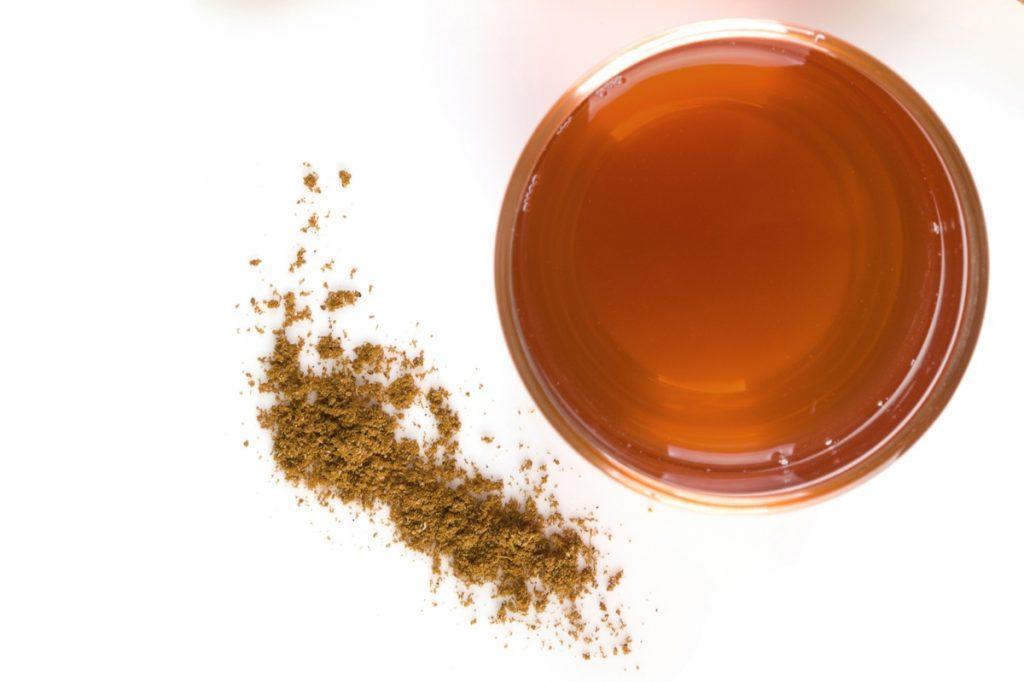
Potential Side Effects and Risks of Turkey Tail Mushrooms
While the potential benefits of turkey tail mushrooms are astounding, it’s essential to be aware of the associated risks and side effects. Individuals with mushroom or mold allergies should avoid turkey tail mushrooms, as they may trigger an allergic reaction. Anaphylaxis, a severe and life-threatening allergic response, is a possibility for those with sensitivities to fungi.
Some individuals who take turkey tail supplements or extracts report side effects such as nausea, constipation, and heartburn. If you are considering incorporating turkey tail mushrooms into your routine, especially if you have underlying health conditions or are taking other medications, we strongly advise consulting your healthcare provider.
Harnessing the Medicinal Power of Turkey Tail Mushrooms
When purchasing commercial turkey tail supplements, they typically come in dried powder form. However, if you decide to harvest wild turkey tail mushrooms, you’ll need to dry and grind them into a powder yourself. To prevent mold growth, it’s crucial to dry them as soon as possible.
To dry turkey tail mushrooms, you can use a food dehydrator set to approximately 115 degrees Fahrenheit (46 degrees Celsius). This process typically takes around 24 hours for an average-sized mushroom. Once dried, you can crush the mushrooms into a powder using a food processor or a mortar and pestle.
The resulting powder can be encapsulated and taken as a supplement. Alternatively, you can make tea directly from the powder. Considering the taste of turkey tail mushrooms isn’t particularly palatable, many people add the powder to smoothies, oatmeal, soups, or salad dressings to mask the flavor. It’s important to note that unlike some other medicinal mushrooms, turkey tail mushrooms can have their beneficial compounds extracted with water alone, eliminating the need for an alcohol extraction process.
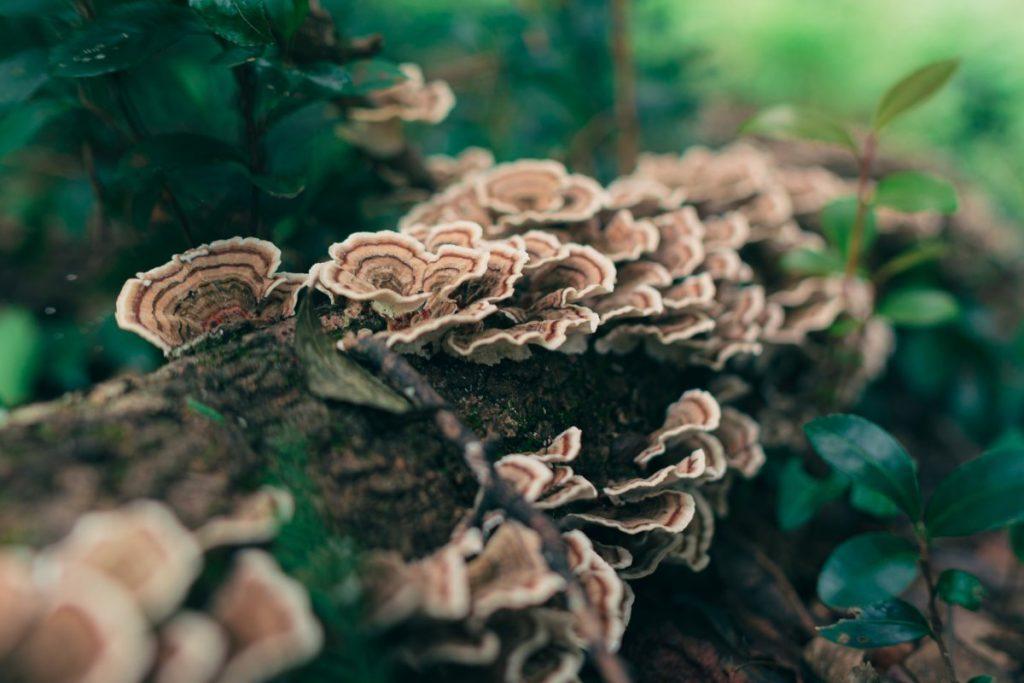
Savoring the Flavors of Turkey Tail Mushrooms
While turkey tail mushrooms may not tantalize your taste buds, they possess a mild mushroom flavor that doesn’t overpower other ingredients in your dishes. Most people view turkey tails as a fiber supplement, adding the dried mushroom powder to smoothies, oatmeal, soups, or salad dressings. After all, it’s the medicinal benefits that truly matter, not the taste.
Finding Turkey Tail Mushrooms
If you’re eager to embark on a mushroom-hunting adventure, turkey tail mushrooms are an excellent species to seek out. Found almost everywhere in the world, these mushrooms are easily identifiable, making them the perfect starting point for novice foragers. Simply venture into a forest, and with a little luck, you’ll stumble upon these marvelous mushrooms.
When searching for turkey tail mushrooms, pay close attention to hardwood trees. Look near the base of dead stumps, on the trunks of fallen trees, or even on branches. While turkey tails primarily grow on hardwood, they can occasionally be found on coniferous trees as well. Remember to respect nature and follow any regulations or guidelines in place regarding mushroom harvesting.
Identifying Turkey Tail Mushrooms
Identifying turkey tail mushrooms is a relatively simple task compared to many other mushroom species. While turkey tails don’t have any known poisonous look-alikes, it’s still essential to properly identify them to ensure you reap the intended benefits.
Here are some key characteristics to look for when identifying turkey tail mushrooms:
Tiny Pores on the Underside
All true turkey tail mushrooms possess tiny pores on the underside of their caps. This distinctive feature sets them apart from other mushrooms that may have gills instead of pores. Genuine turkey tails will exhibit three to eight pores per millimeter (1/25th of an inch), which are extremely tiny and may require careful observation.
Fuzzy Surface
When you gently run your finger over the cap of a turkey tail mushroom, you’ll notice a velvety or slightly hairy texture. This fine fuzz is a critical identifying feature, distinguishing true turkey tails from imposters.
Highly Contrasted Colors
Turkey tail mushrooms boast captivating and highly contrasted bands of color on their caps. These colors change abruptly from one to another, setting them apart from other mushrooms with more gradual and blended coloration.
Young Caps Should Be Thin and Flexible
When turkey tail mushrooms are young and small, they exhibit flexibility and can be bent easily. This characteristic differs from other mushrooms that tend to be rigid and hard even in their early stages. Keep in mind that larger and older turkey tail mushrooms may also become more rigid, but young specimens should maintain a bendable nature.
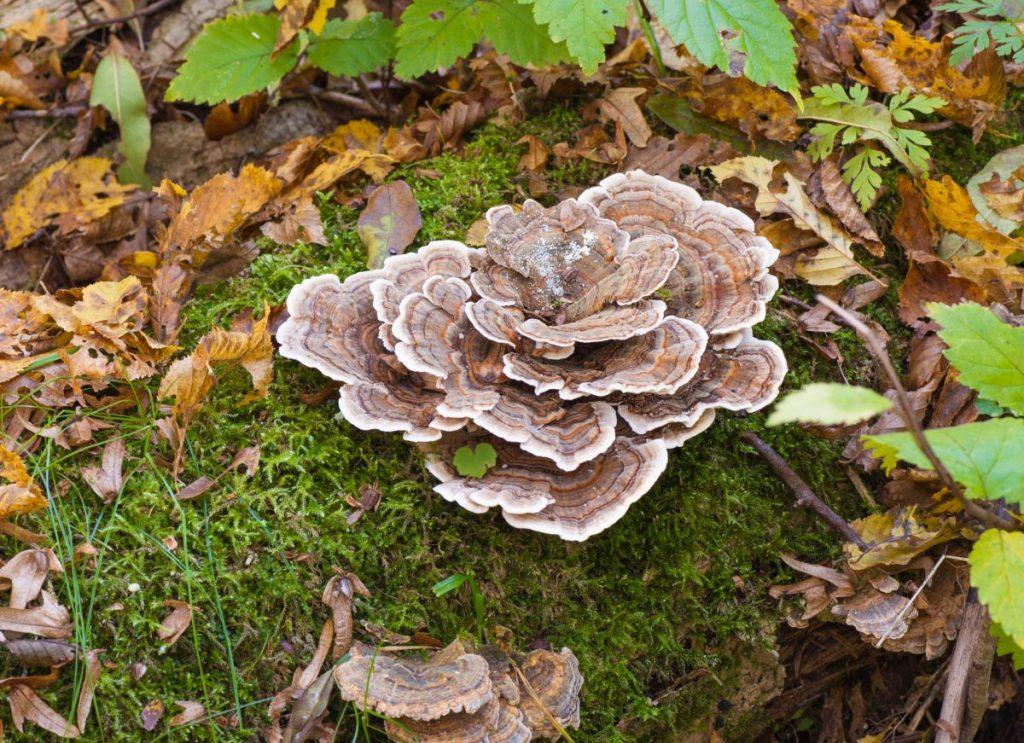
The Seasonality of Turkey Tail Mushrooms
Turkey tail mushrooms can be found throughout the year, depending on your location and climate. In the Northern hemisphere, they are most abundant between May and December, particularly during autumn and winter when spore dispersal is at its peak.
Types of Turkey Tail Mushrooms
While turkey tail mushrooms are known by various scientific names, including Trametes versicolor, Coriolus versicolor, and Polyporus versicolor, they all refer to the same remarkable species. While appearance may differ slightly depending on climate and the type of wood they grow on, they are the same kind of mushroom.
Turkey Tail Mushroom Look-Alikes
Though turkey tail mushrooms have no known deadly look-alikes, several species may resemble them. With a little investigation, you can easily differentiate true turkey tails from imposters using the characteristics we’ve discussed. Most false turkey tails belong to the Trametes family, displaying a more grayish appearance without the vibrant colored bands seen in true turkey tails. Additionally, false turkey tails tend to have larger and less numerous pores underneath their caps.
Stereum ostrea is another mushroom species known as the false turkey tail. While their caps might resemble those of turkey tails, the flat underside devoid of pores will give away their true identity. Other mushrooms, such as trichaptum abietinum or lenzites betulina, may also bear a resemblance to turkey tails at first glance. However, a quick look under their caps, revealing gills or tooth-like structures, will quickly dispel any confusion.
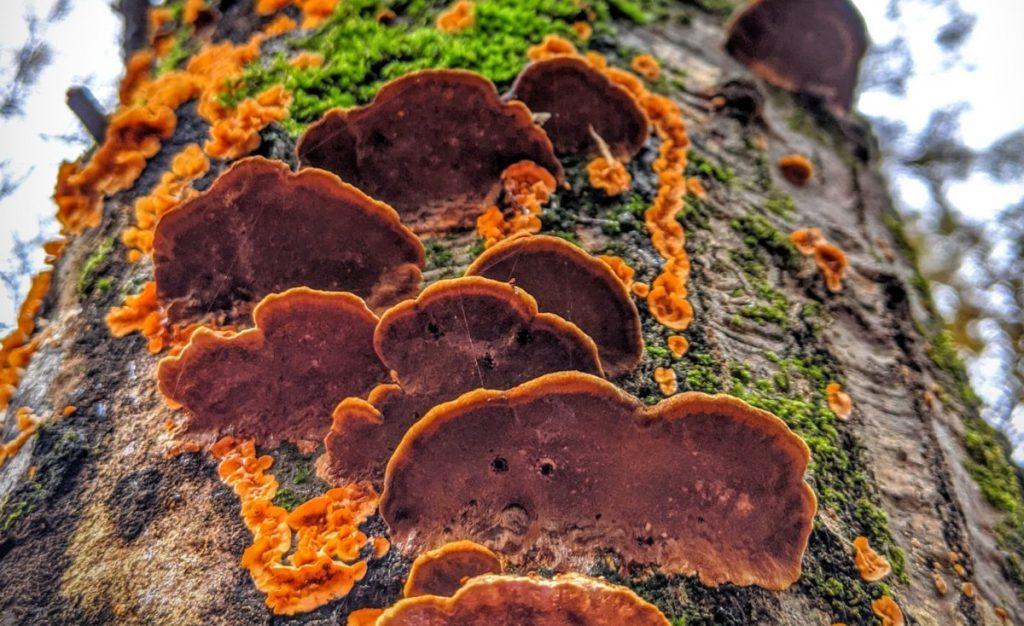
Harvesting Turkey Tail Mushrooms
When venturing into the woods in search of turkey tail mushrooms, it’s advisable to bring a small sharp knife with you. This tool will assist in gently separating the mushrooms from tree trunks or logs. Smaller mushrooms can often be simply twisted off by hand.
Selecting the best turkey tail mushrooms primarily involves ensuring there are no signs of insects, mold, or other imperfections. Inspect the mushrooms carefully before harvesting, as worms and other small creatures enjoy feasting on them as well. Remove any mushrooms that show signs of damage or infestation.
Cultivating Turkey Tail Mushrooms at Home
Growing turkey tail mushrooms at home is a rewarding and straightforward endeavor. You can start by purchasing a pre-prepared kit, which simplifies the process. Alternatively, you can obtain sawdust or plug spawn and inoculate logs, similar to growing shiitake mushrooms.
For detailed step-by-step instructions on how to prepare and care for your turkey tail logs, visit our article How To Grow Mushrooms On Logs: The Ultimate Guide. While hardwood logs are ideal for cultivating turkey tails, some enthusiasts have reported success with recycled Christmas trees.
The History and Fun Facts of Turkey Tail Mushrooms
Turkey tail mushrooms have a rich history that spans more than 1,000 years, with roots in traditional Chinese medicine. Although they may be lesser-known than reishi mushrooms in Chinese herbal remedies, references to turkey tail mushrooms can be found in ancient Chinese writings dating back to 200 BC. The scientific name “versicolor” aptly describes the wide array of colors adorning the caps of turkey tail mushrooms.
Interestingly, not everyone appreciates turkey tail mushrooms. Tree owners sometimes worry about these mushrooms causing harm or even death to their trees. Removing the mushrooms can help preserve the health of the trees.
In Conclusion
Turkey tail mushrooms may not be palatable for direct consumption, but their medicinal benefits are undeniably impressive. With the potential to lower insulin resistance, boost the immune system, enhance the effects of cancer treatment, and aid in obesity prevention, turkey tail mushrooms offer a myriad of health advantages.
These easily identifiable mushrooms can be found almost anywhere in the world, making them an excellent starting point for mushroom enthusiasts. Just remember to harvest responsibly and ensure you’re gathering true turkey tail mushrooms by paying attention to their distinct characteristics.
So, whether you’re an avid forager or simply interested in harnessing the power of nature’s remedies, turkey tail mushrooms are an enticing addition to your wellness journey. Remember to consult with your healthcare provider before adding any new supplements to your health routine. For more informative articles on mushrooms and wellness, visit Ekilove.
This guide to turkey tail mushrooms was brought to you by Ekilove. Discover the wonders of nature and embrace a healthier lifestyle.



